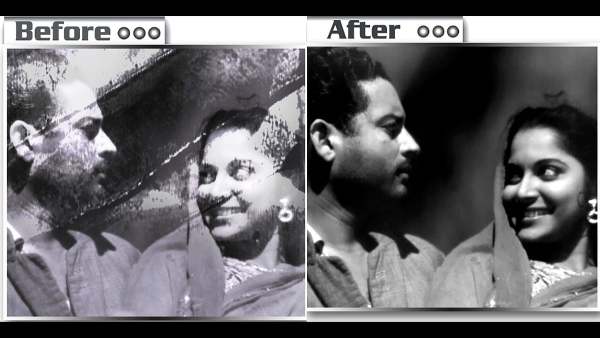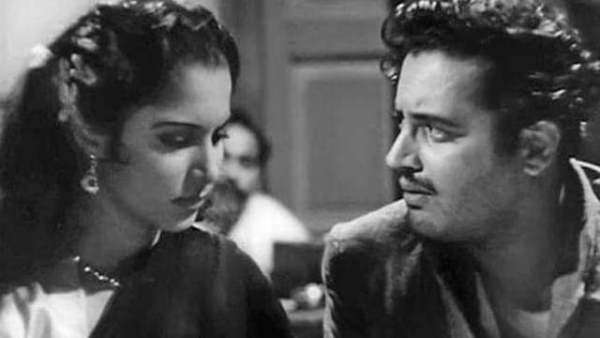
A closer look at how Guru Dutt’s iconic works are being revived for new generations, and why film restoration is vital
India has a long and rich history of cinema, filled with unforgettable stories, legendary artists, and timeless music. But as time passes, many of these old films begin to fade away—both physically and in public memory. To stop this loss, film restoration has become more important than ever. A recent example of this effort is the restoration of classic films by the legendary filmmaker Guru Dutt, on the occasion of his 100th birth anniversary (July 9). Guru Dutt’s most iconic films were restored and presented at Cannes Film Festival 2025. They were alsore-released in theatres across India in July.
Why it matters
Over the years, films suffer damage from age, dust, moisture, and heat. The colours fade, sound weakens, and sometimes entire parts are lost. Without restoration, these important works would disappear forever. Using advanced software like Diamant, PF Clean, and Revival, technicians carefully clean and repair each frame. Guru Dutt’s films were restored in 2K and 4K resolution, making them fresh and clear for modern audiences. Sanjay C Nair, filmmaker and committee member in charge of the Visual Quality Control Lab Design at the National Film Archive of India, explains the deeper value behind such efforts: “The basic idea of restoring films is to ensure that the legacy left behind by artists, directors, and producers is preserved for future generations. A film is a document of its times, holding precious historical value. That’s why restoration and digitisation are essential. Cleaning digitally scanned images—removing dust, hairs, or scratches—is done globally to match the original look as closely as possible.”
He further adds, “There is an ethical responsibility in restoration. The goal is not to enhance but to preserve. Colourising, for instance, must be done with care, ideally with inputs from the original creators. If not, we rely on reference stills or documentation. Personally, I believe black-and-white films have a unique emotion, and colourisation can sometimes dilute their purity.”

A still from Kaagaz Ke Phool |
Restoring history
Films are more than just entertainment—they are reflections of the times they were made in. They act like time capsules, preserving everything from the clothing and music to the social attitudes of the era.
Ultra Media & Entertainment Group, the studio behind the restoration of Guru Dutt films, has also worked on other classics like Chori Chori, Paigham, and Insaniyat, helping preserve the golden age of Indian cinema for years to come. Rajat Agrawal, COO of Ultra Media, says: “This is a small homage and tribute from our side to Guru Dutt ahead of his 100th birth anniversary. Film restoration and preservation are not just about technology; they are also about respect for our storytellers, audiences, and cultural legacy.”
He adds, “We wanted to do it thoroughly and meticulously. Today, we can say that all his movies are fully restored and in great condition for the world to see. Although many people already know his work, this will give it a broader audience and wider reach in the best possible way.”
Behind the scenes
The restoration process is detailed and time-consuming. It begins by evaluating the condition of the film reels. Many older films are fragile, faded, or damaged. The reels are scanned at high resolution, then cleaned frame-by-frame to remove dirt, scratches, and distortions. Sound is treated separately to remove hiss, noise, or damage. Colour grading is done to match the original tone and visual style. Even with the latest software and equipment, restoration teams often need to rely on human judgment and artistic instinct. Collaborating with film historians and archivists, they make sure the final output remains faithful to the filmmaker’s original vision.

A still from Pyaasa |
Global recognition
Guru Dutt’s storytelling and cinematography have found appreciation beyond Indian borders. At Cannes, his restored films captivated international audiences. His themes—love, longing, failure, and identity—are timeless. His signature visual style, blending Indian and Western influences, continues to inspire filmmakers around the world. “Young filmmakers and students can study these restored classics and learn from one of the finest storytellers Indian cinema has ever produced,” adds Agrawal.
Future for the past
With platforms like Cannes and modern streaming services offering greater visibility to restored classics, India’s heritage films are finding a new lease on life. Restoration ensures that important cultural artifacts don’t vanish into obscurity. It also helps global audiences appreciate India’s storytelling traditions. Guru Dutt’s restored works aren’t just old films—they’re living pieces of history, now made accessible with the care and reverence they deserve.